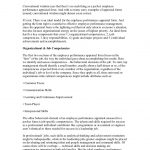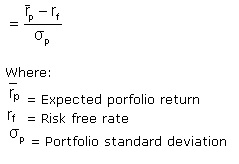
At the core of this process is the product backlog, a prioritized list that helps your development team stay focused and on track. Electronic boards are the better option for a team that has remote members or collects a great deal of supplementary information about product backlog items. Physical boards offer the advantage of making the product backlog continuously visible and concrete during discussions around the product backlog.

Backlog format: flat backlog vs story mapping
- You can drag and drop cards to reorder them, add labels for easy categorization, and collaborate with team members by adding comments and attachments.
- If the backlog grows too large or lacks any consistent, coherent organization, it can quickly shift from a valuable resource to an unsalvageable mess.
- Lean teams may use a backlog to track work items, but the focus is on optimizing the flow of value through the system.
- The functionality required for each step could be turned into tasks (with subtasks added for more complex steps).
- This is an ongoing activity to add details, such as a description, order, and size.
- Roadmaps give a broader view of where the product is headed and are a higher-level document than a PB that’s focused on the actual development tasks.
Likewise, are food and meals taxable in michigan a falling backlog might be a portentous sign of lagging demand but may also signify improving production efficiency. Naturally, unexpected backlogs can compromise forecasts and production schedules. The term backlog is used to indicate the existing workload that exceeds the production capacity of a firm or department, often used in construction or manufacturing. Sprint Planning is an event in scrum that defines what can be delivered in the upcoming sprint and how that work will be achieved. Check out their interfaces and go for one that your team can pick up quickly and actually enjoy using. If you work in a larger team or on a complex project, Jira or Azure DevOps might be a better fit.
Facilitate team discussion.
Product owners dictate the priority of work items in schedule k instructions the backlog, while the development team dictates the velocity through the backlog. This can be a tenuous relationship for new product owners who want to “push” work to the team. Keep everything in one issue tracker–don’t use multiple systems to track bugs, requirements, and engineering work items. If it’s work for the development team, keep it in a single backlog. Business needs and objectives determine the priority of items in the product backlog. Despite its many benefits, there are also limitations to consider when using backlog management as a technique.
Provides a roadmap for progress
The functionality required for each step could be turned into tasks (with subtasks added for more complex steps). This article dives into the purpose of sprint backlogs and how to create them effectively using software and tools such as Jira. Documentation is essential for maintaining transparency and clarity during change management. The business analyst should update relevant documentation, such as user stories or use cases, with any approved changes made to the backlog.
Also, don’t worry about their priority just yet—you’ll work on the order later. Tasks are specific actions that need to be completed as part of user stories or epics. They are more granular nj division of taxation and provide detailed instructions on what must be done on the front or back end. A product backlog can be an effective way for a team to communicate what they are working on and what they plan to work on next. Story Maps and information radiators can provide a clear picture of your backlog for the team and stakeholders.
What Is a Sprint Backlog? Benefits & How to Create One
For example, a product development context contains a prioritized list of items. Typical items on a product backlog include user stories, changes to existing functionality, and bug fixes. In Agile frameworks, a product backlog is a prioritized list of work items that guide the development team’s efforts. These items can include new features, bug fixes, technical tasks, and enhancements that will improve the product.
As a general recommendation, a flat backlog is the best choice for teams that prefer simplicity and have a relatively straightforward development process. A story map works better if a product has a complex user journey and you need a visual, contextual approach to managing features and releases. Your team should create a roadmap first, which will then serve as the action plan for how your product will change as it develops. The roadmap is the vision for long-term product development, but it can also evolve. A product backlog is an ordered list of tasks, features, or items to be completed as part of a larger roadmap. If the backlog grows too large or lacks any consistent, coherent organization, it can quickly shift from a valuable resource to an unsalvageable mess.
So the key deliverable of backlog grooming is the Sprint Backlog, which consists of clear, actionable items due by the end of the upcoming sprint. As for refinement frequency, a common practice is to hold the session before planning the next sprint or iteration. However, this is not strictly dictated by Scrum and should be determined based on current necessity. It can occur multiple times during a sprint if needed, but if the top PBIs are already clear and detailed enough, no further refinement might be required. Product backlog items (PBIs) are its components, similar to the entries on the to-do list.